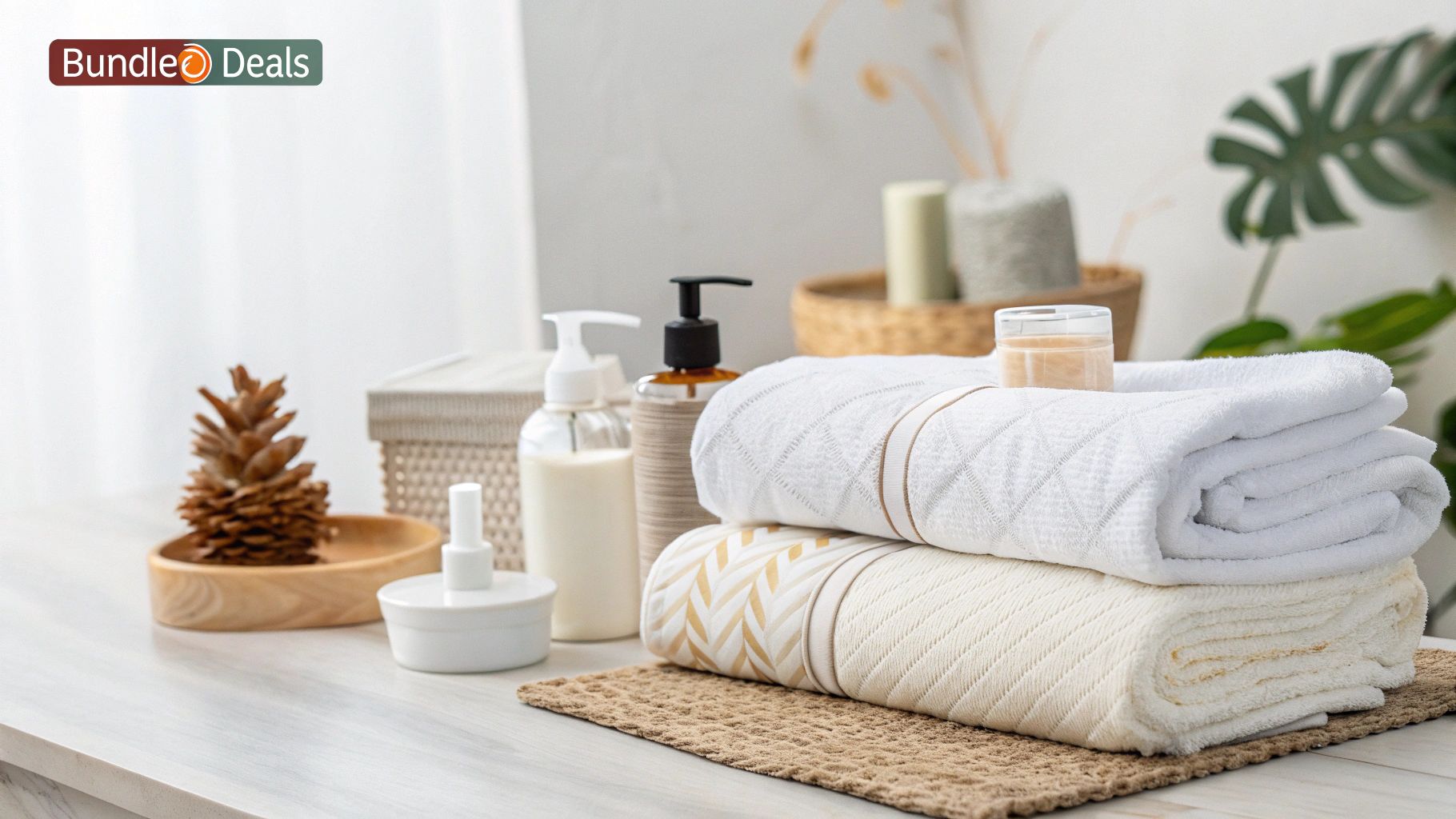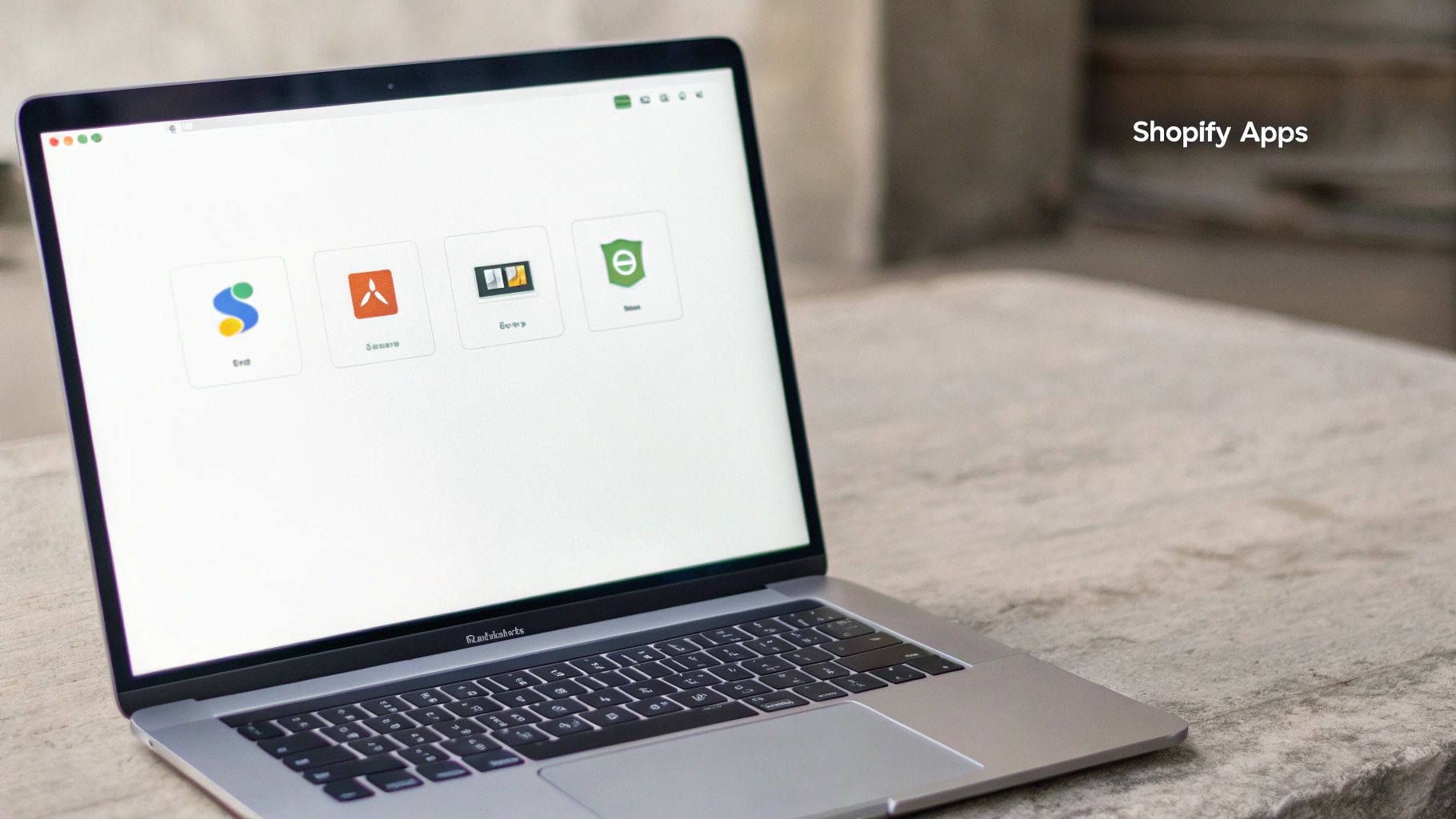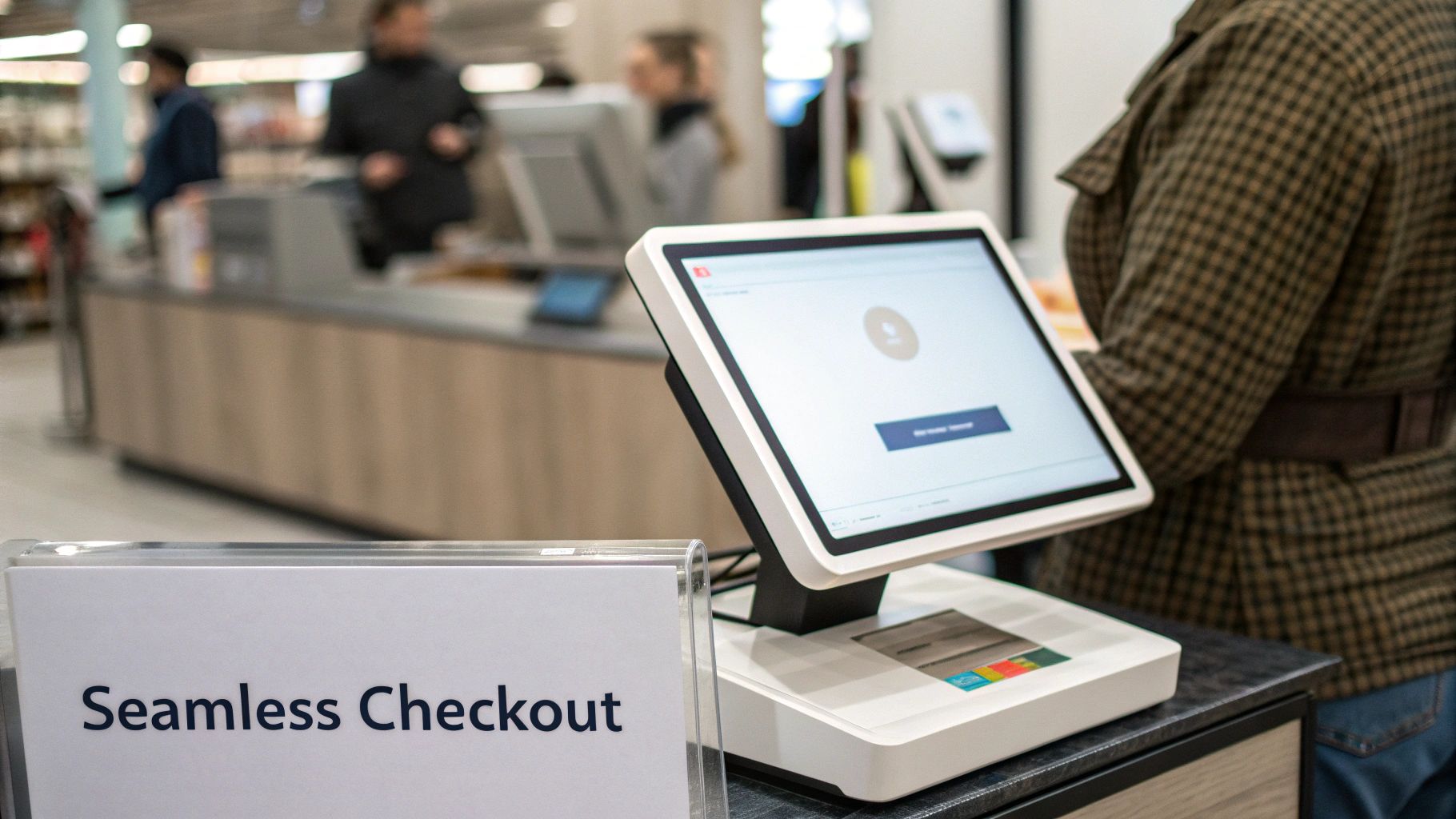The Psychology Behind Successful Shopify Upselling
Effective upselling on Shopify isn't about pushing extra products on your customers. It's about understanding their motivations and offering genuinely valuable upgrades. It's about anticipating needs and presenting options that enhance their purchase. This involves understanding the psychology of persuasion, creating a win-win for both the merchant and the customer.
Understanding Customer Intent
The first step to mastering the upsell is understanding customer intent. What are they searching for? What problems are they trying to solve? Analyzing browsing behavior, purchase history, and the specific products they're viewing provides insights into their needs.
For example, if a customer adds a basic camera to their cart, they might be open to enhanced photography options. This understanding allows you to tailor upsell offers to match their goals.
The Power of Value Perception
Successful upselling hinges on presenting offers as valuable enhancements, not just extra costs. This means emphasizing the value proposition of the upgrade.
How will it improve their experience? Will it save them time or money in the long run? Focusing on the benefits shifts the customer's perspective from cost to value, making the upgrade more enticing. Consider highlighting premium features, extended warranties, or exclusive bundles.
Timing is Everything
When you present the upsell is crucial. Too early, and it feels pushy, interrupting the shopping flow. Too late, and you miss the opportunity.
The ideal timing is often after a customer demonstrates commitment, like adding an item to their cart or proceeding to checkout. A streamlined checkout process is key for higher conversion rates. Shop Pay, for example, can boost conversions by up to 50% by simplifying the checkout. Find more statistics here.
The Art of Subtle Suggestion
The most effective upsells are often subtle. Avoid aggressive tactics or overwhelming customers with choices. Instead, frame the upsell as a helpful suggestion or a personalized recommendation.
This approach feels less intrusive and more aligned with genuinely improving the customer experience. Consider showcasing customer testimonials, highlighting "frequently bought together" items, or offering a limited-time upgrade at a special price. By combining these principles with a customer-centric approach, you can elevate upselling from a sales tactic to a valuable service.
Configuring Your Shopify Store for Upselling Success

Persuasive offers are just the beginning when it comes to successful upselling on Shopify. Your store needs to be set up to integrate upselling seamlessly. This includes organizing your products effectively, making the most of your theme's features, and guiding customers toward natural upselling opportunities. A disorganized product catalog, for instance, can hide upsell potential and lead to customer frustration.
Slow loading times, often due to bulky themes or too many apps, can also turn customers away before they even see your upsell offers. This section will show you how to optimize these key areas for upselling success.
Structuring Product Relationships
The best-performing Shopify merchants strategically connect related products. This goes beyond simply tagging items as "related." They use tactics like product bundles, tiered product options, and accessory recommendations. This helps customers see the added value of upgrading or buying complementary items.
For example, someone looking at a basic tent might be shown a bundle that includes a sleeping bag and camping pillow, encouraging a larger purchase. You might be interested in: How to master selling digital products on Shopify.
Optimizing Theme Features for Upselling
Your Shopify theme is essential for presenting upsells effectively. Some themes include built-in features such as pop-up recommendations and "frequently bought together" sections. These features require careful setup, however. Too many pop-ups can annoy customers, while poorly chosen product recommendations can seem irrelevant. Choosing a theme that supports upselling without hurting the user experience is key.
Organizing Your Products to Maximize Upsell Opportunities
Clear product categories, filters, and search functionality help customers find what they need and discover related products. This improves their shopping experience and introduces them to potential upgrades or add-ons. For example, someone looking at hiking boots might find specialized hiking socks through clear category navigation – a prime upselling opportunity.
To help you get started with optimizing your Shopify settings, take a look at the table below:
Here's a quick overview of essential Shopify settings for boosting your upselling efforts:
| Setting/Feature | Purpose | Implementation Difficulty | Impact Level |
|---|---|---|---|
| Product Bundles | Group related products for a single purchase | Easy | High |
| Tiered Product Options | Offer different versions of a product (e.g., Basic, Premium) | Medium | High |
| Accessory Recommendations | Suggest add-ons to complement main purchases | Easy | Medium |
| Pop-Up Recommendations | Display targeted upsell offers during browsing | Medium | High (if used correctly) |
| "Frequently Bought Together" | Showcase items commonly purchased with the current product | Easy | Medium |
| Clear Product Categories & Filters | Improve product discoverability and navigation | Medium | High |
| Robust Search Functionality | Enable quick product searches | Easy | Medium |
This table highlights the relative ease of implementation and potential impact of these settings, offering a practical guide for optimizing your store's upselling capabilities. Remember that focusing on "easy" and "high impact" changes can lead to significant improvements with minimal effort.
Real Store Examples
Many Shopify stores use these strategies effectively. Some showcase tiered product options directly on product pages, making it easy for customers to compare features and prices. Others employ post-purchase upsells, suggesting relevant upgrades or add-ons after the initial purchase. These examples show how small changes to your store's structure can create many opportunities for relevant upsells during the customer journey. By using these methods, you can turn your Shopify store into an upselling powerhouse while delivering a great customer experience.
Upselling Apps That Actually Deliver Results

Choosing the right upselling app can be a daunting task for any Shopify merchant. With countless options available, each promising a significant revenue boost, it's difficult to discern which ones truly deliver. This section aims to clarify the landscape and spotlight apps that consistently yield positive outcomes. We'll move beyond superficial features and delve into the solutions that genuinely benefit Shopify businesses.
Identifying High-Performing Apps
Analyzing performance data from numerous Shopify stores reveals a clear pattern: some apps consistently outperform others. This goes beyond simply generating a high number of upsells. It's about the overall impact on crucial metrics like conversion rates and customer satisfaction. Some apps might drive upsells but simultaneously increase cart abandonment due to intrusive or poorly targeted offers. The real goal is to find apps that elevate the customer experience while also boosting sales.
Merchant Insights: What Works Best
Learning from real-world experiences is essential. We've spoken with successful Shopify merchants to understand which apps work best across different business models and budgets. A small business with limited resources might prioritize a free app with basic upselling functionalities. In contrast, a larger enterprise might opt for a more comprehensive solution with advanced customization and analytics. Understanding these diverse needs is key to selecting the right tool for your specific situation.
Beyond the Reviews: Integration, Performance, and Customization
Typical app store reviews often overlook crucial details. We'll take a closer look at the practical aspects of these apps, including integration challenges, performance impacts, and customization limitations. Some apps might integrate easily but negatively affect site speed. Others might offer extensive customization but require complex coding or technical expertise. By understanding these trade-offs, you can make informed choices and avoid common pitfalls.
To further optimize your Shopify store and boost sales, check out this helpful resource: Increase Sales on Shopify. It offers valuable insights into maximizing your sales strategies within the Shopify ecosystem.
Combining App Approaches for Seamless Upselling
Many successful Shopify stores utilize a combination of apps to craft a seamless upselling strategy. This could involve one app for product recommendations on product pages, another for cart-based upsells during checkout, and yet another for post-purchase offers. This multi-pronged approach allows for targeted upselling at various touchpoints along the customer journey, maximizing conversion opportunities without overwhelming the shopper. Maintaining optimal site performance is paramount, so prioritize apps that integrate smoothly and don't hinder loading times.
Top Upselling Apps Comparison
To help you begin your search, the table below compares several top-performing upselling apps available on the Shopify App Store:
| App Name | Key Features | Pricing | User Rating (Hypothetical) | Best For |
|---|---|---|---|---|
| App A | Product recommendations, personalized offers, A/B testing | $19/month | 4.8 stars | Stores with a wide product catalog |
| App B | Cart-based upsells, quantity discounts, time-sensitive offers | Free plan available, paid plans from $9/month | 4.5 stars | Stores focused on impulse purchases |
| App C | Post-purchase upsells, subscription management, loyalty programs | $29/month | 4.7 stars | Stores selling repeat-purchase products |
| App D | Bundle creation, tiered pricing, cross-selling features | $15/month | 4.6 stars | Stores offering product variations and add-ons |
This table offers a starting point for your research. It highlights key features and pricing structures, helping you identify an app that aligns with your business needs and budget. Remember, these are just examples, and numerous other excellent upselling apps exist.
By carefully evaluating these factors, you can select upselling apps that not only boost revenue but also enhance customer satisfaction and foster loyalty, contributing to sustainable growth for your Shopify business.
Strategic Placement: When and Where Upsells Convert

Knowing when and where to present an upsell is just as crucial as knowing what to offer. It’s about understanding your customer's journey and offering them valuable additions at the right time. This section delves into strategic upsell placement on Shopify, highlighting key locations and triggers that can maximize your conversion rates.
Product Page Upsells: Capitalizing on Initial Interest
The product page is a powerful starting point for upsells. Customers are already interested in a specific item, making them more open to related offers. Consider presenting upsells as "better together" bundles, highlighting premium versions with additional features, or suggesting complementary accessories.
For example, a shopper viewing a camera might be offered a bundle including a lens and carrying case, a premium version with higher megapixels, or a complementary accessory like a tripod.
Cart Page Upsells: Leveraging Purchase Intent
Adding items to the cart signals strong purchase intent. The customer is ready to buy, creating a prime opportunity for upsells that enhance their chosen items. This could include related products, extended warranties, or even gift-wrapping options. These additions increase the overall order value while providing extra value to the customer.
Checkout Flow Upsells: Last-Minute Opportunities
Even during checkout, there are still chances to increase sales with well-placed upsells. Order bumps, such as low-cost add-ons that complement the purchase, or express shipping upgrades can be highly effective at this stage. These last-minute offers can boost average order value without disrupting the checkout experience.
Post-Purchase Upsells: Extending the Customer Relationship
Post-purchase upsells are a great way to continue the customer relationship and drive repeat business. After a purchase is completed, a personalized thank you email suggesting related items or offering exclusive discounts on future purchases can be very effective. This capitalizes on the recent positive buying experience and encourages future engagement.
Behavior Triggers: Personalizing the Upsell Experience
Savvy Shopify merchants leverage behavior triggers to personalize upsell offers. This might involve offering a discount on a second item when a customer browses a specific product category, or suggesting a premium upgrade based on their past purchase history. Utilizing behavioral data allows for tailored offers that resonate with individual customer preferences, increasing the likelihood of conversion.
The Importance of Subtlety and Timing
Upselling should always feel helpful, never pushy. Avoid overwhelming customers with too many options. Instead, focus on presenting a small number of highly relevant upsells at strategic moments in their shopping journey. This approach fosters a positive experience and increases the chances of upsell acceptance. Offering an extended warranty for electronics immediately after adding the item to their cart, for example, can be more effective than presenting multiple upsell offers later on.
By strategically placing and personalizing your upsells, you can significantly increase your average order value and boost your Shopify store's revenue. Remember, timing and subtlety are key to creating an upselling strategy that resonates with customers and drives positive results.
Crafting Irresistible Upsell Offers That Customers Want
Creating compelling upsell offers on Shopify isn't about pushing pricier versions of the same product. It's about understanding your customer's needs and presenting upgrades that truly enhance their experience. This approach transforms a standard purchase into a premium one by naturally overcoming price objections.
Understanding Value Propositions
The core of any irresistible upsell is a strong value proposition. Focus on the added benefits, not just the increased cost. Instead of "Upgrade to our Premium Plan for $20 more," try "Unlock exclusive features and priority support with our Premium Plan for just $20 more." The latter highlights the value customers receive for their extra spend.
Determining Optimal Price Differentials
The price difference between your standard and premium offerings is a critical factor for conversions. Too small, and the upgrade seems insignificant. Too large, and you risk deterring customers. The "rule of thirds" is a useful guideline. This framework suggests an upsell price roughly one-third higher than the original item.
Structuring Tiered Offerings
Tiered offerings give customers choices. Present multiple upgrade options, each with escalating benefits and prices. This allows customers to select the upgrade that best aligns with their needs and budget, much like choosing coffee sizes: tall, grande, venti. Each size offers a slightly different value proposition.
The Language of Upselling
The words you use significantly impact upselling success. Avoid pushy phrases like "You need this" or "Don't miss out." Instead, emphasize benefits and value with phrases like "Enhance your experience" or "Get the most out of your purchase." For example, when a customer adds a phone case to their cart, suggest a screen protector with, "Protect your investment with our premium screen protector."
Examples of Messaging That Converts
Effective upselling demonstrates real-world benefits. Don't just list features; explain how they solve problems or improve the customer's life. If someone is buying a basic coffee maker, try this upsell message: "Wake up to freshly brewed coffee every morning with our auto-timer feature." You may also be interested in exploring further customer retention strategies: Learn more about customer retention strategies in our comprehensive guide.
By mastering clear value propositions, strategic pricing, tiered offerings, and persuasive language, you can craft upsells that customers genuinely want. This results in higher average order values and a more satisfying shopping experience overall.
Measuring What Matters: Optimizing Your Upsell Strategy
Adding upsells to your Shopify store is just the first step. Truly understanding their effectiveness requires a deeper dive into the data. This means looking beyond the initial sales numbers and focusing on key performance indicators (KPIs) that reveal the true impact of your upselling efforts. This section will explore how to measure and optimize your strategies for lasting success.
Identifying Critical KPIs
While a boost in revenue is a welcome sign, it only tells part of the story. Other vital metrics include conversion rate, average order value (AOV), and customer lifetime value (CLV). Keeping track of these KPIs offers a more complete picture of how your upsells are performing. For instance, a high conversion rate on upsells suggests your offers resonate with customers.
Setting Up Proper Tracking Systems
Shopify provides built-in analytics to track some of these metrics. However, for more detailed insights, consider using specialized analytics tools or apps. These tools can pinpoint which upsells are most successful, identify customer segments that are most receptive to upsells, and highlight areas needing improvement. Google Analytics is a popular option for tracking website data. This data-driven approach ensures your upselling strategy is informed by actual customer behavior, rather than guesswork. You may find this helpful: How to master ecommerce customer journey mapping.
Real Merchant Examples: Learning From the Best
Successful Shopify merchants often combine analytics tools and A/B testing to refine their upselling strategies. They might experiment with different offer placements, price points, or messaging to determine what works best for their target audience. This iterative process allows them to continuously optimize for maximum impact. For example, one merchant discovered that offering a bundle of related products at a small discount dramatically increased their AOV.
Common Pitfalls and How to Avoid Them
Overwhelming customers with too many upsell offers is a common mistake. This can create a negative shopping experience and lower conversions. Another pitfall is offering irrelevant upsells. This can harm your brand's credibility and discourage customers from considering future offers. By carefully monitoring customer feedback and analyzing your data, you can identify and address these issues before they negatively affect your bottom line.
An Optimization Framework for Continuous Improvement
Ongoing optimization is key to long-term success with upselling. This requires regularly reviewing KPIs, analyzing customer behavior, and exploring new approaches. A straightforward framework could include:
- Analyze: Examine your upselling data to pinpoint high-performing offers and areas for improvement.
- Test: Try different offer placements, pricing, and messaging.
- Refine: Based on your test results, adjust your upselling strategy accordingly.
- Repeat: Continuously monitor and optimize your approach for continued growth.
By embracing a data-driven optimization framework, you can ensure your upselling strategy remains effective and contributes to the growth of your Shopify business.
Looking for a seamless way to integrate digital products and courses into your Shopify store? Tevello offers a powerful platform to create and sell courses directly within your existing Shopify ecosystem. Enhance customer engagement, boost average order value, and create a more comprehensive shopping experience. Explore Tevello and transform your Shopify store today!




